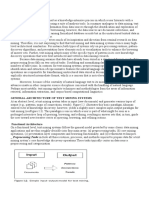0% found this document useful (0 votes)
12 views20 pagesIntroduction To
This document serves as a comprehensive guide to artificial intelligence (AI), covering its fundamentals, key domains, essential terminology, and real-world impacts. It discusses the evolution of AI, its classification into narrow, general, and superintelligent AI, and highlights applications in data science, natural language processing, and computer vision. The guide also addresses the benefits and limitations of AI, emphasizing the importance of ethical considerations and responsible application.
Uploaded by
Anagha PradeepCopyright
© © All Rights Reserved
We take content rights seriously. If you suspect this is your content, claim it here.
Available Formats
Download as PPTX, PDF, TXT or read online on Scribd
0% found this document useful (0 votes)
12 views20 pagesIntroduction To
This document serves as a comprehensive guide to artificial intelligence (AI), covering its fundamentals, key domains, essential terminology, and real-world impacts. It discusses the evolution of AI, its classification into narrow, general, and superintelligent AI, and highlights applications in data science, natural language processing, and computer vision. The guide also addresses the benefits and limitations of AI, emphasizing the importance of ethical considerations and responsible application.
Uploaded by
Anagha PradeepCopyright
© © All Rights Reserved
We take content rights seriously. If you suspect this is your content, claim it here.
Available Formats
Download as PPTX, PDF, TXT or read online on Scribd
/ 20



































































































